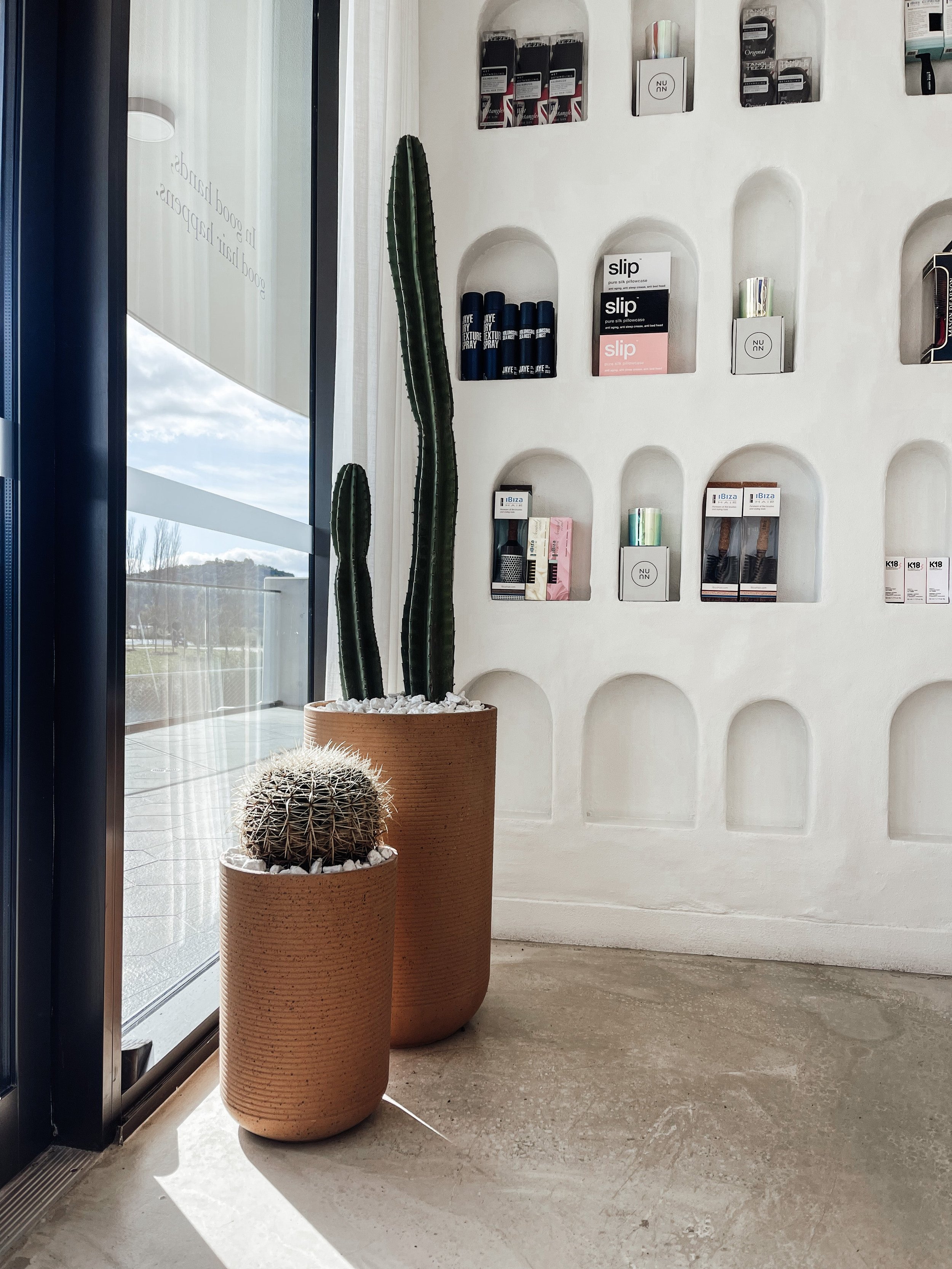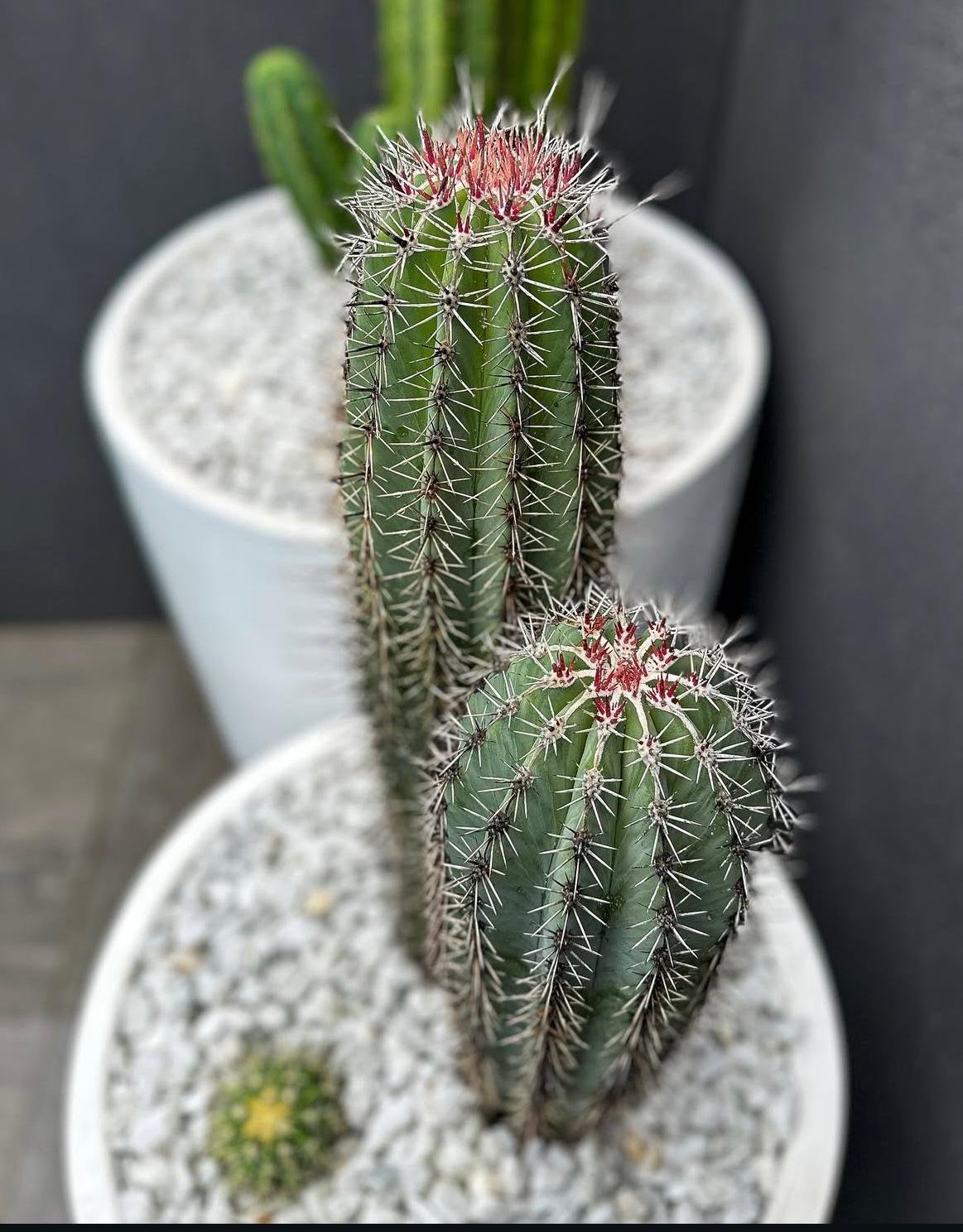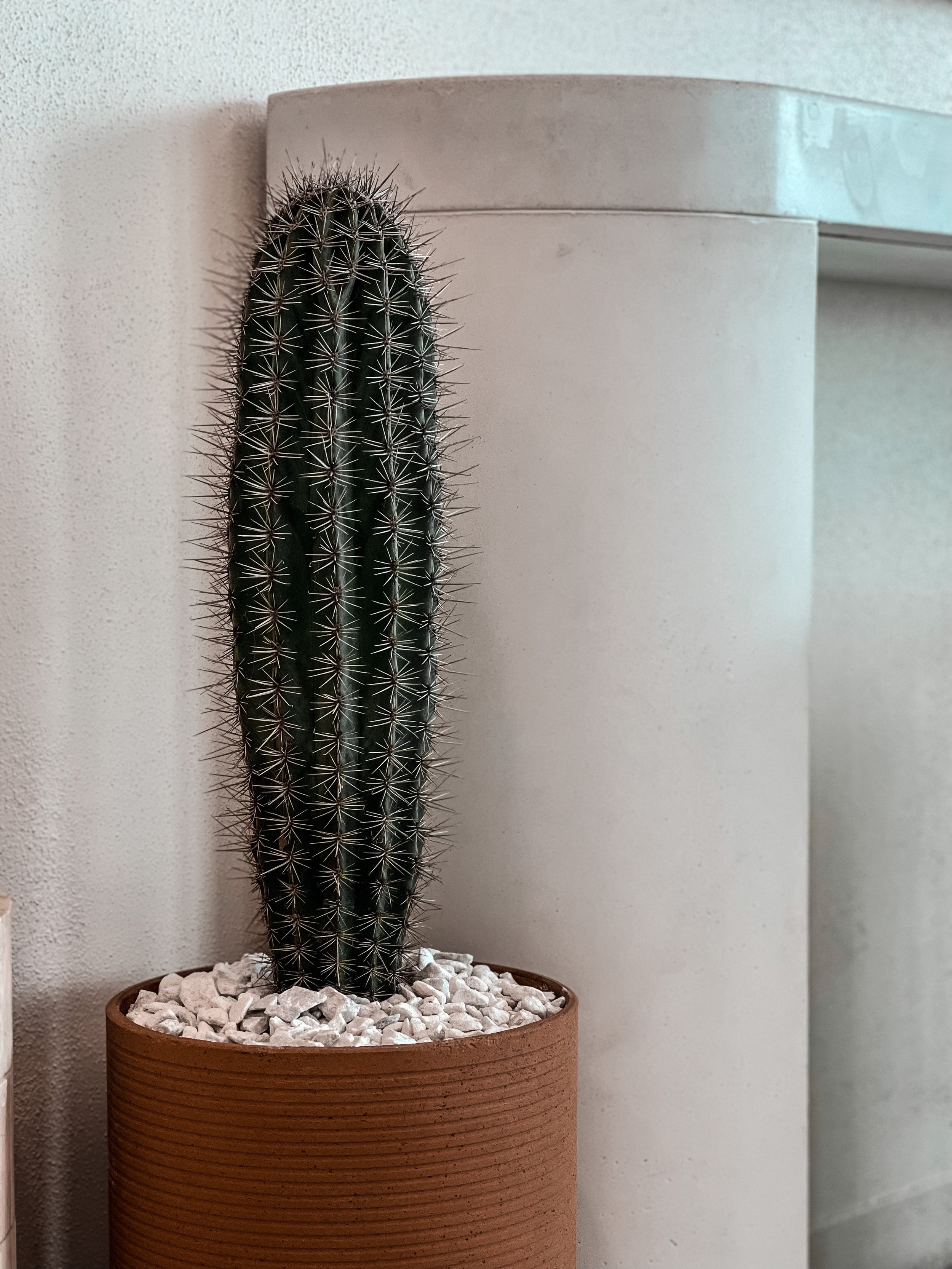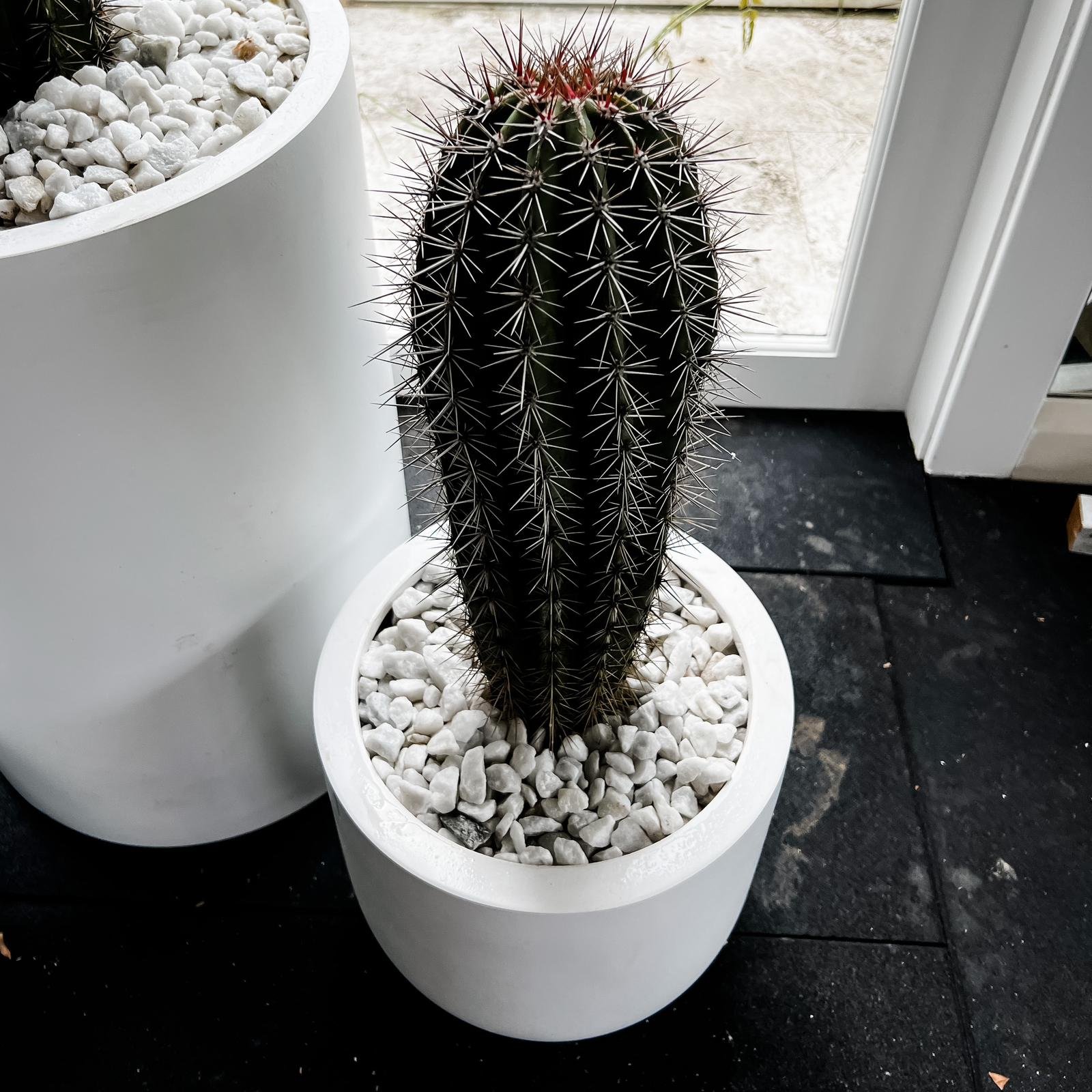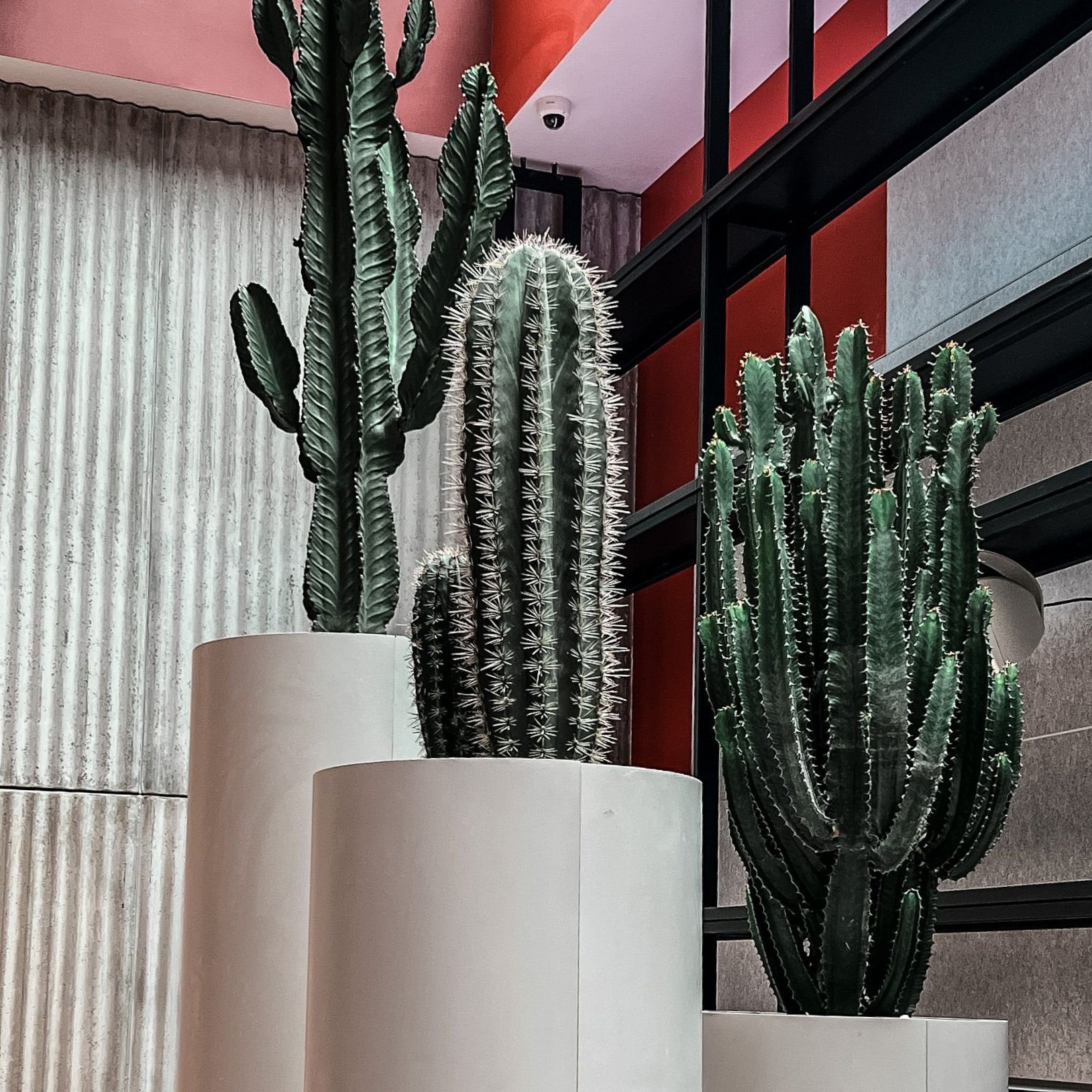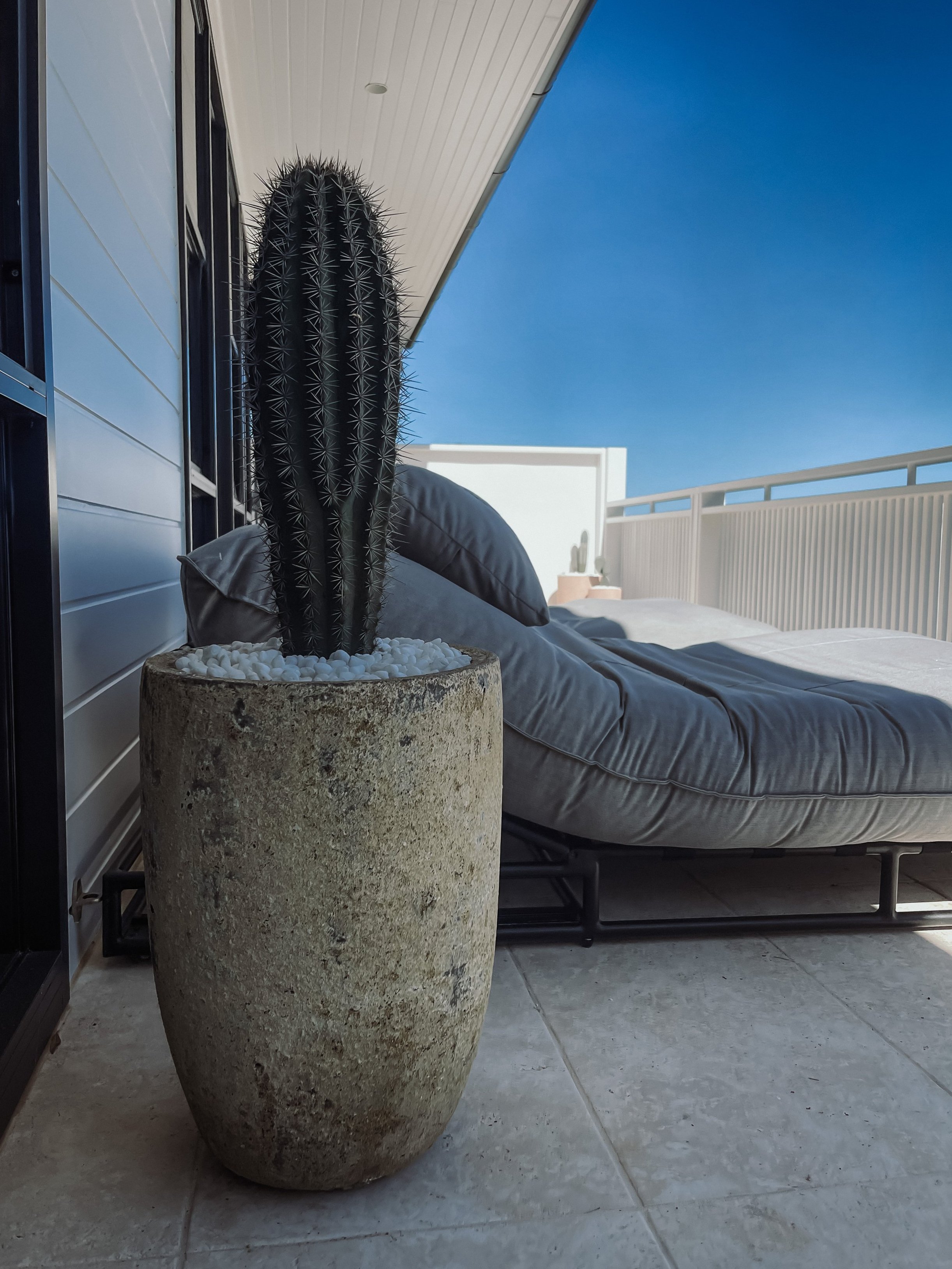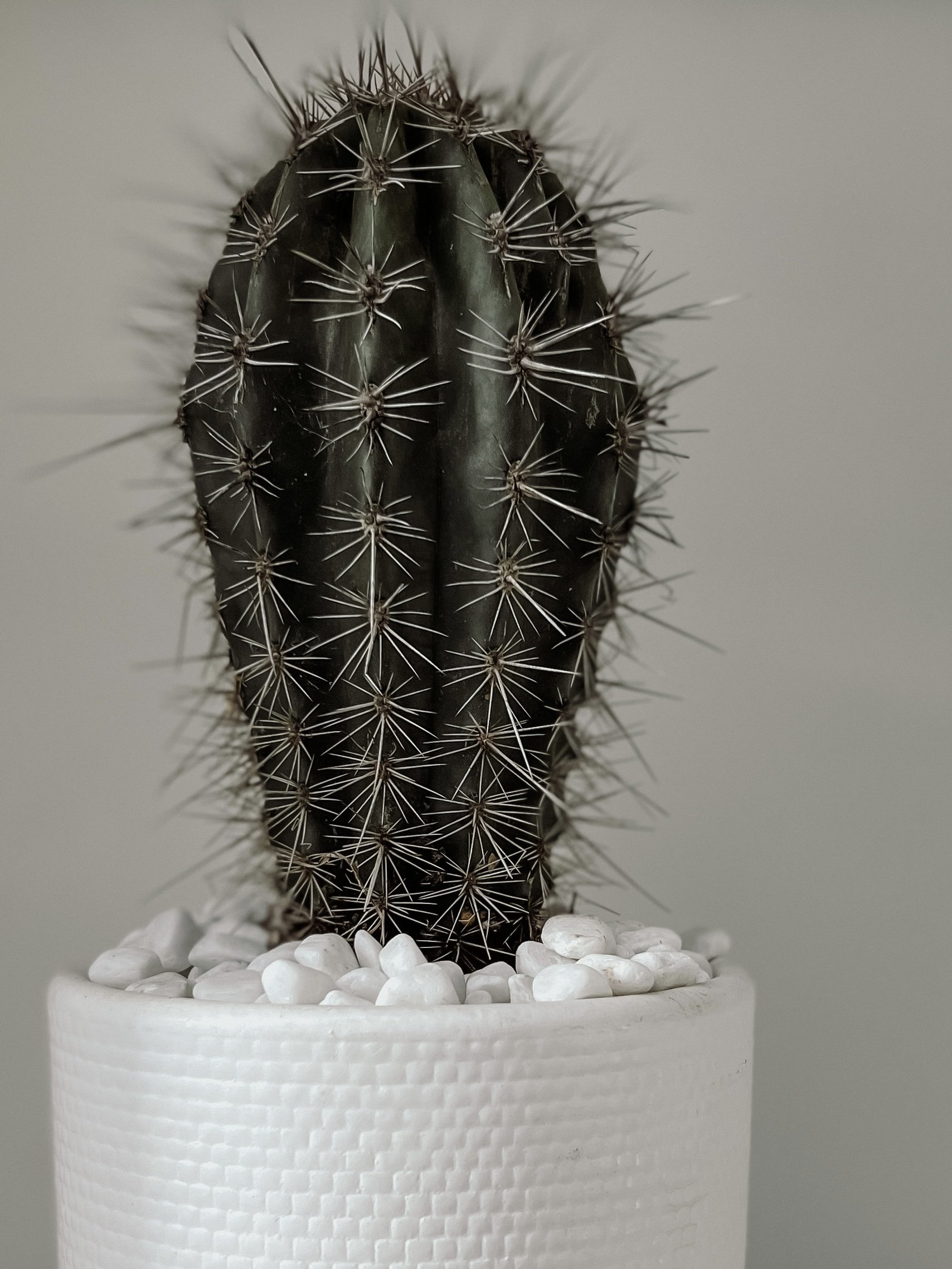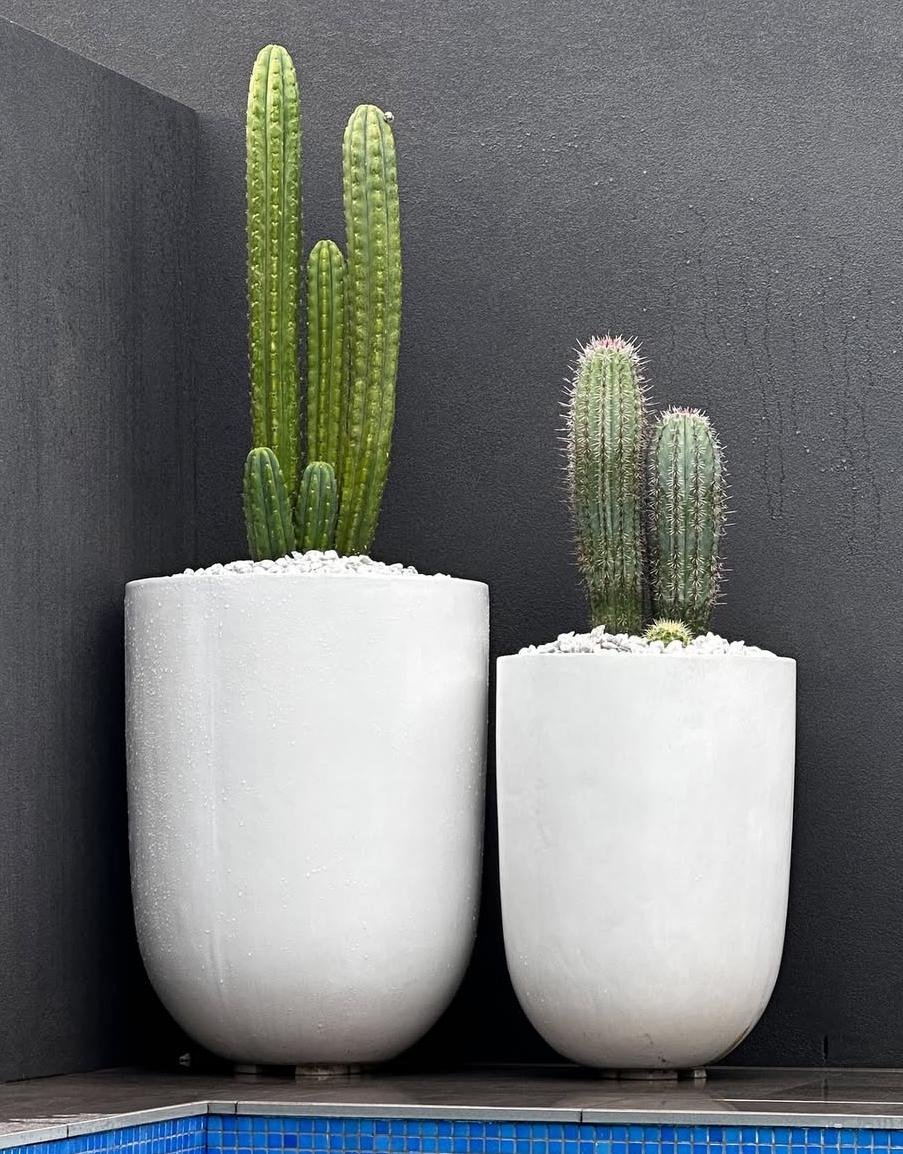Silver Torch (Cleistocactus Strausii)
BOTANICAL NAME
Cleistocactus Strausii
ORIGIN
Southern America
WATER
Water when soil is almost dry from spring to early autumn, seldom in winter (I’m cool to be caught in the rain if I have good drainage)
OUTDOORS
Full day sun, bring it on! I’d also do great in ‘Partial Sun’
INDOORS
Not recommended
FROST TOLERANT
Moderate - High tolerance (for short periods)
GROWTH RATE
Slow- Moderate, 5-15cm per annum. Growing up to 3m tall with sufficient watering
POPULARITY
Rare
FLOWERS
Annual red tubular flowers once mature
PETS & CHILDREN
Position with caution, away from foot traffic. Low risk to children and pets
CONCACTUS FOR ALL INQUIRIES REGARDING PLANTS “UNAVAILABLE” ONLINE
Ready to spike up your space? Our products come in plastic pots, but fear not!
Get in touch post-purchase and we'll pot-ify your cactus for maximum appeal.
*IMAGES ARE CV STOCK EXAMPLES
Native to mountainous lands throughout South America, the Silver Torch Cactus (Cleistocactus Strausii) is a striking column cactus species that clusters from the base to create breathtaking huddles, reaching heights of 3 meters tall once fully mature. This deer and rabbit-resistant plant is also known as the Wooly Torch, Borzicactus Strausii, or Cereus Strausii.
The Cleistocactus Strausii is best suited for outdoors and can cope with Sydney's full-day sun, making it perfect for those locations where other plants appear to get sunburnt. Keep in mind that half-day sun may maintain the vibrancy of this plant's white wool better. This sun-loving cactus is susceptible to scale and mealybugs. Treat seasonally to minimize outbreaks.
Flowering seasonally, the Cleistocactus Strausii's red tubular flowers form for 4-5 days on the whole stem of each plant, making them a popular species to collect for floral display despite their flowers never fully opening.
Cactus Vision favours this plant for low-wind areas, especially spaces with dark green or black backdrops. This cactus is also very popular in Moroccan and Mediterranean-inspired gardens. The white from this plant's "wool" typically remains lush, however, new growth is always the whitest. Frost tolerant, this species requires little upkeep and maintenance yet prefers to be dry over winter if possible.




